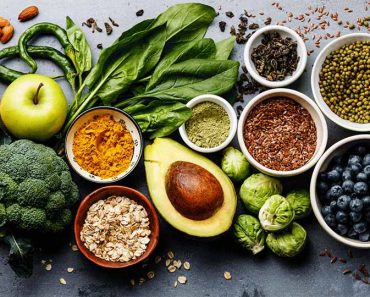The Dietary Approaches to Stop Hypertension (DASH) diet has gained significant attention for its ability to lower blood pressure and promote overall heart health. Developed in the 1990s through research funded by the National Institutes of Health (NIH), the DASH diet emphasizes the consumption of nutrient-rich foods that are beneficial for cardiovascular health. This article explores the principles of the DASH diet, its health benefits, and how to incorporate it into your daily routine.
What is the DASH Diet?
The DASH diet is designed to help prevent and manage high blood pressure, also known as hypertension. It focuses on a balanced eating plan that includes a variety of foods rich in potassium, calcium, magnesium, fiber, and protein while limiting sodium intake. The diet encourages the consumption of whole grains, fruits, vegetables, lean proteins, and low-fat dairy products, while reducing the intake of saturated fats, cholesterol, and sweets.

Key Components of the DASH Diet
Fruits and Vegetables: These are the cornerstone of the DASH diet. They are high in essential nutrients such as potassium, magnesium, and fiber, which help lower blood pressure. Aim to include at least 4-5 servings of fruits and 4-5 servings of vegetables each day.
Whole Grains: Whole grains like brown rice, quinoa, whole wheat bread, and oatmeal are rich in fiber and other nutrients that help regulate blood pressure. Aim for 6-8 servings of whole grains daily.
Lean Proteins: The DASH diet recommends lean sources of protein such as poultry, fish, beans, and nuts. These proteins are lower in unhealthy fats and provide essential nutrients. Include 2 or fewer servings of lean meat, poultry, or fish per day and opt for plant-based proteins frequently.
Low-Fat Dairy: Dairy products are an important source of calcium and vitamin D, which are crucial for heart health. Choose low-fat or fat-free dairy options, aiming for 2-3 servings per day.
Nuts, Seeds, and Legumes: These are excellent sources of magnesium, potassium, and protein. Incorporate 4-5 servings of nuts, seeds, or legumes each week.
Healthy Fats: The DASH diet encourages the use of healthy fats, such as those found in olive oil, avocados, and fatty fish, while limiting saturated fats and trans fats. Keep total fat intake to about 27% of your total daily calories, with a focus on healthy fats.
Sodium: One of the primary goals of the DASH diet is to reduce sodium intake to help lower blood pressure. The standard DASH diet recommends consuming no more than 2,300 milligrams of sodium per day, while a lower sodium version suggests a limit of 1,500 milligrams per day.
Health Benefits of the DASH Diet
Numerous studies have demonstrated the effectiveness of the DASH diet in improving heart health and reducing the risk of chronic diseases. Key benefits include:
Lower Blood Pressure: Research shows that the DASH diet can significantly reduce blood pressure, even in individuals with normal levels. This effect is due to the diet’s emphasis on foods high in potassium, magnesium, and calcium, which help regulate blood pressure.
Improved Cholesterol Levels: The diet’s focus on healthy fats and fiber-rich foods helps improve cholesterol levels by lowering LDL (bad) cholesterol and increasing HDL (good) cholesterol.
Weight Management: The DASH diet promotes a balanced and nutrient-rich eating plan, which can aid in weight loss and maintenance. The emphasis on whole foods and portion control helps reduce calorie intake while providing essential nutrients.
Reduced Risk of Chronic Diseases: By lowering blood pressure and improving cholesterol levels, the DASH diet reduces the risk of heart disease, stroke, and type 2 diabetes. The diet’s high fiber content also promotes digestive health and may reduce the risk of certain cancers.
Tips for Following the DASH Diet
Plan Your Meals: Planning your meals ahead of time can help you incorporate a variety of DASH-friendly foods and stay within recommended portion sizes. Consider preparing meals in advance to ensure you always have healthy options available.
Read Food Labels: Pay attention to food labels to choose products low in sodium, saturated fats, and added sugars. Look for items that are high in fiber, vitamins, and minerals.
Cook at Home: Preparing meals at home allows you to control the ingredients and portion sizes, making it easier to adhere to the DASH diet principles. Experiment with new recipes and cooking methods to keep your meals interesting.
Snack Smart: Choose healthy snacks such as fresh fruit, raw vegetables, nuts, and yogurt to stay satisfied between meals. Avoid processed snacks that are high in sodium, sugar, and unhealthy fats.
Stay Hydrated: Drink plenty of water throughout the day to stay hydrated and support overall health. Limit sugary beverages and alcohol, which can add unnecessary calories and affect blood pressure.
Gradual Changes: If you’re new to the DASH diet, start by making small, gradual changes to your eating habits. Slowly increase your intake of fruits, vegetables, and whole grains while reducing your consumption of high-sodium and high-fat foods.
The DASH diet offers a practical and effective approach to improving heart health and managing blood pressure. By emphasizing nutrient-rich foods and reducing sodium intake, the DASH diet not only helps lower blood pressure but also promotes overall well-being. Incorporating the principles of the DASH diet into your daily routine can lead to long-term health benefits, making it a valuable tool for anyone looking to enhance their diet and lifestyle. Whether you’re aiming to prevent hypertension or simply want to adopt healthier eating habits, the DASH diet provides a sustainable and enjoyable way to achieve your health goals.






